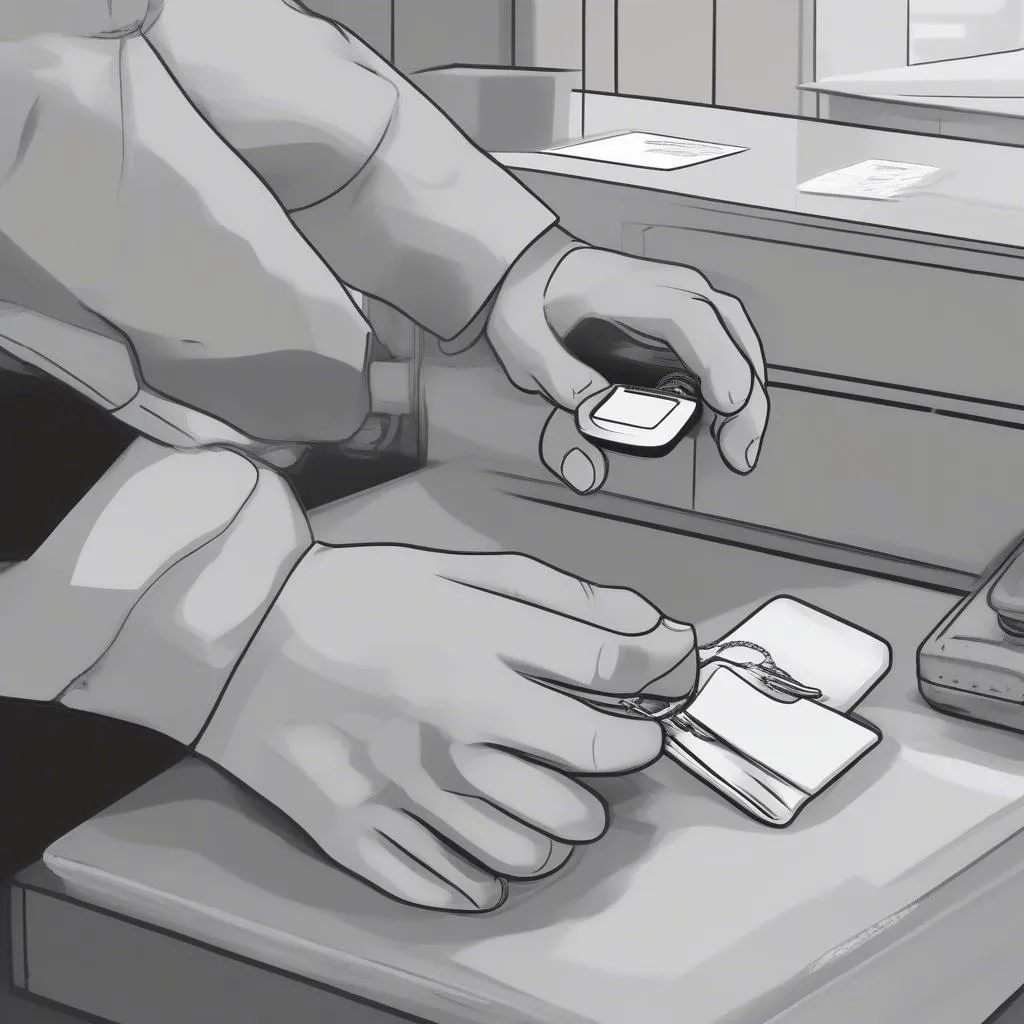So, you’re dealing with a stubborn anti-theft tag from Target? It happens! Whether you forgot to have it removed at checkout or encountered a technical glitch, these little devices can be a real pain. But before you resort to drastic measures, let’s explore some safe and effective solutions to get that tag off without damaging your purchase or, more importantly, breaking the law.
Why Are Anti-Theft Tags So Persistent?
Anti-theft tags are designed to deter shoplifting, a common concern for retailers like Target. These tags contain electronic circuits that trigger an alarm if they’re tampered with or pass through security sensors without proper deactivation. The persistent nature of these tags is a testament to their effectiveness in preventing theft.
Identifying the Type of Anti-Theft Tag
The first step in removing the tag is identifying what type it is. Target uses various security tags, but the most common are:
- Ink tags: These tags contain a security ink cartridge that can permanently stain clothing if tampered with.
- RFID tags: These tags use radio-frequency identification technology and are typically found on more expensive items.
- Acousto-magnetic tags: These tags consist of a metal strip and a small magnetic component. They are often used on clothing and accessories.
Once you’ve identified the type of tag, you can proceed with the appropriate removal method.
 Removing an Anti-Theft Tag from Clothing at Home
Removing an Anti-Theft Tag from Clothing at Home
What You’ll Need for Removal
Here’s a list of tools that might come in handy:
- Strong magnet: This can deactivate certain types of tags. Neodymium magnets, available online, are recommended for their strength.
- Rubber bands: These can help loosen some tags.
- Pliers: Only use these as a last resort and with extreme caution, as they can damage the item.
Removing the Anti-Theft Tag Safely
It’s important to emphasize that tampering with security tags yourself can be risky and, in some cases, illegal. If you’re uncomfortable attempting removal, it’s always best to return to the store for assistance.
Here are some steps you can TRY at your OWN RISK:
- The Magnet Method (for acousto-magnetic tags): Place a strong magnet directly over the raised bump on the tag. While applying pressure, slide the magnet towards the edge of the tag. This should detach the pin and release the tag.
- The Rubber Band Technique (for some tags): Wrap a thick rubber band around the pin or hook of the tag. Twist the rubber band multiple times to create tension, then use your fingers to try and pry the tag open or loosen the pin.
Important: If these methods don’t work or you’re uncertain about the tag type, DO NOT attempt further removal yourself.
 Various Anti-Theft Tags Commonly Used in Retail Settings
Various Anti-Theft Tags Commonly Used in Retail Settings
Frequently Asked Questions About Anti-Theft Tags
Q: Can I just cut the tag off?
A: We strongly advise against this. Cutting the tag can trigger the ink cartridge or damage the item.
Q: Will the store remove the tag for me even if it’s been a while since I purchased the item?
A: Most stores will remove the tag, but it’s best to have your receipt handy just in case.
Q: I accidentally ripped the tag off, and now there’s a hole in my shirt! What do I do?
A: Unfortunately, this can happen. Your best bet is to contact Target’s customer service and explain the situation. They might offer a refund or exchange.
Need More Help? Cardiagtech Can Assist!
Anti-theft tags aren’t the only things that can cause headaches. At CARDIAGTECH, we specialize in automotive diagnostic services, programming, and remote software installation to solve various car problems. From complex electrical issues to software glitches, our team of experts can provide the support you need. Contact CARDIAGTECH today for professional assistance and get back on the road with confidence.
Remember, while online information can be helpful, it’s crucial to exercise caution and consult with professionals when dealing with potentially dangerous or damaging situations.


